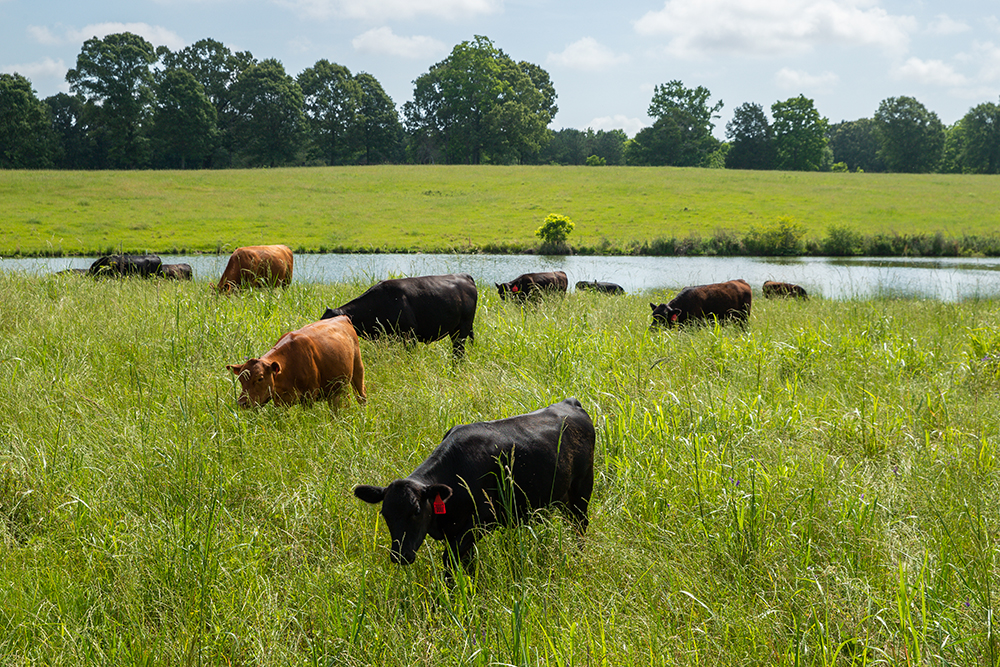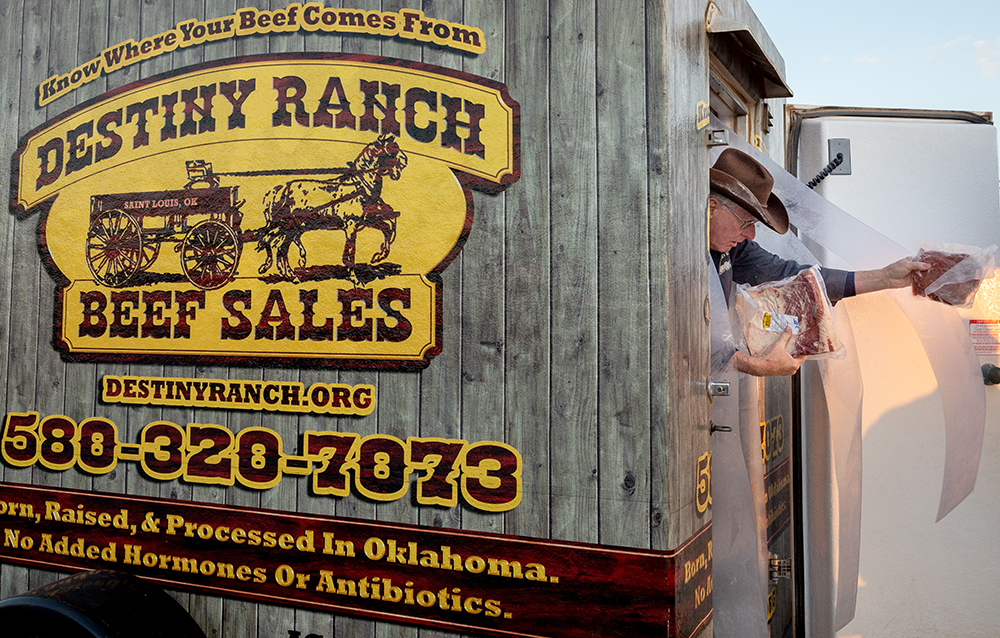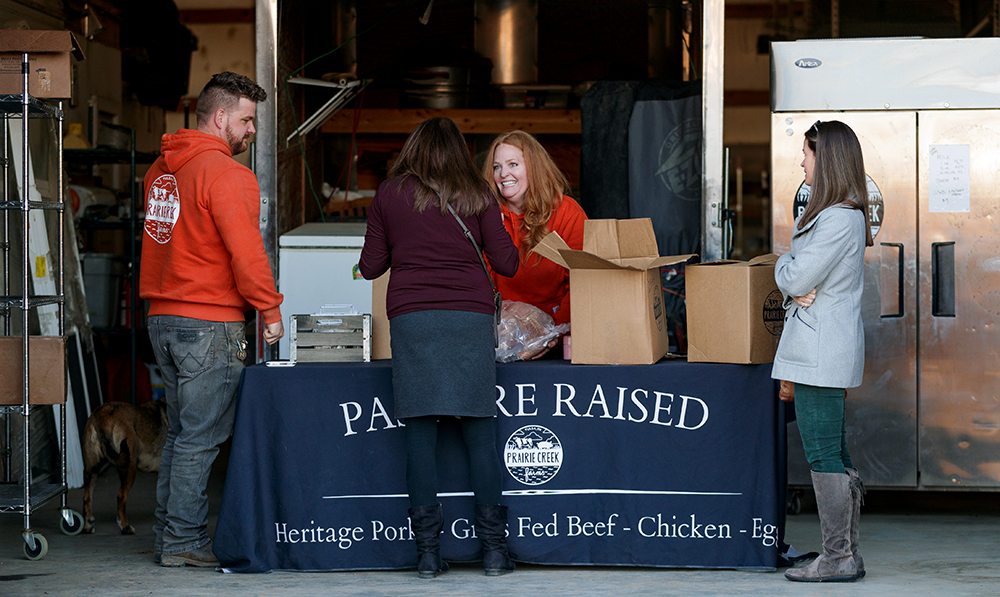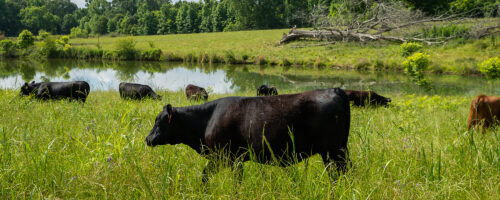3 Tips for Marketing Regeneratively Raised Cattle and Beef
Learn more about capturing maximum value for the cattle you raise regeneratively.
More and more consumers want to buy beef that has been raised in a sustainable way, and they are willing to pay for it. This affects everyone in the beef industry, from the producer to the final beef supplier, whether it be a grocer or restaurant.
Ranchers applying regenerative practices on their ranch are at an advantage to capture these emerging premiums while also ensuring their ranch is sustainable for generations to come.
A proponent of these practices, Robert Wells, joined the Noble Research Institute as a livestock consultant in 2005. During his lifetime in the business, he has seen regenerative principles and practices offer value to producers time and time again.
He says the value is not solely seen in extra money made, but also in money saved. In either event, here are a few tips he offers for ranchers who want to maximize value in their regeneratively raised calves and finished cattle.

1. Recognize value to your ranch and at market
As Wells often reminds ranchers he encounters, payments come to producers in many forms.
“One is the actual-dollar cash payment for the purchase of that animal,” he says. “But we have to remember that there are aspects that are less easily quantifiable that regenerative brings to the table.”
Over time, the soil gets healthier, the forage gets more nutritious and the carrying capacity of the land should increase, while at the same time inputs decrease, saving money.
Beyond these savings, there are more opportunities all the time for ranchers to receive premiums in the marketplace. Today, a rancher can capture value in a few different ways depending on their herd size.
“The main thing is, you must find a venue where your animals are going to get recognized for the value-added traits you built,” he says.
For example, a producer taking cattle to a typical auction market may not see a premium, because when a buyer is filling an order, he likely isn’t filling the entire order with regeneratively raised cattle. By going to a venue where other producers are marketing cattle raised under the same stipulations, ranchers have more opportunity for value.
These marketing alliances with other like-minded producers in the area offer more potential for profit as there is strength in numbers. In other words, working with an order buyer securing a truckload of cattle all raised with the same value-added characteristics offers a higher likelihood of a premium.

2. Find best direct-to-consumer marketing outlet for you
If a rancher decides to market directly to the consumer, Wells recommends starting small.
“Test the water, because there is more work involved in marketing this way,” he says. “You’ve got to find the customer, and you’ve got to cultivate that customer. You can convey the story that goes along with the cattle to them and confidently convey that message to a customer who finds value in those animals.”
Often, marketing directly to the consumer means the cattle are delivered to the processor, and the consumer picks up the beef processed to their specification. Some producers sell face-to-face at traditional farmer’s markets. While these are popular options for selling direct, Wells says they are not the only way to gain extra value from beef sales.
Companies like ButcherBox and Barn2Door are in the business of partnering with and supporting farmers and ranchers adhering to regenerative practices. These websites offer producers a platform to market their beef product to consumers seeking beef harvested from regenerative operations.
“Those are the two largest formats out there that allow a producer who wants to try to direct-sell to the customer to have a venue online,” he describes.
He doesn’t discount the value in brick-and-mortar establishments like local restaurants or meat markets, though. More and more, these businesses are seeking cattle raised with a holistic mindset. One limiting factor in this marketing choice is a rancher’s ability to provide a consistent supply of beef to a retailer. That is a fundamental consideration when determining the best marketing avenue, because the rancher’s supply must match the demand of the marketing outlet he or she has selected.
Retail grocery chains, like Whole Foods or Sprouts, can also be an option for smaller producers, since their meat buyer likely will be able to source cattle from enough different ranches to meet their demand. That way they can look to several like-minded producers to fill their order as opposed to sourcing all their product from one ranch.

3. Keep good records and tell your story
No matter the journey you select to market your product, Wells says keeping good records and telling the story are two key components to finding marketing success. Today, many customers demand a full history.
“We’re not only marketing the calf, but we’re marketing everything that we’ve done for that calf as we’ve gone through the process,” he says. “And that means we’ve got to have records.”
In fact, a third-party verification of the management claims a rancher makes is often required by marketing outlets in response to consumer demand. In some cases, this means an on-farm visit by an auditor representing the buyer. If consumers are going to pay a premium at the meat case, they want validation that the claims of regenerative practices are true.
Keeping records goes hand-in-hand with telling the ranch’s story. Wells says there is strategy involved there, too.
“Highlight the advantages of what you are doing to make your product special,” he says. “Highlight those things that set your cattle and ranch apart from others, without being negative” about other operations.
The beef industry is all on the same team, so marketing beef as a high-quality protein before pointing out the disadvantages of differing management strategies benefits the entire industry. Specifically for those managing regeneratively, Wells says some points to emphasize would be talking about how the cattle live on a ranch their entire lives and play a role in enhancing the health of the land.
Wells encourages producers to continue their good work toward soil health as part of their operation, because more premiums are on the way.
“There will be numerous programs developed to help producers capture value for their cattle being raised regeneratively,” he says.



Comment